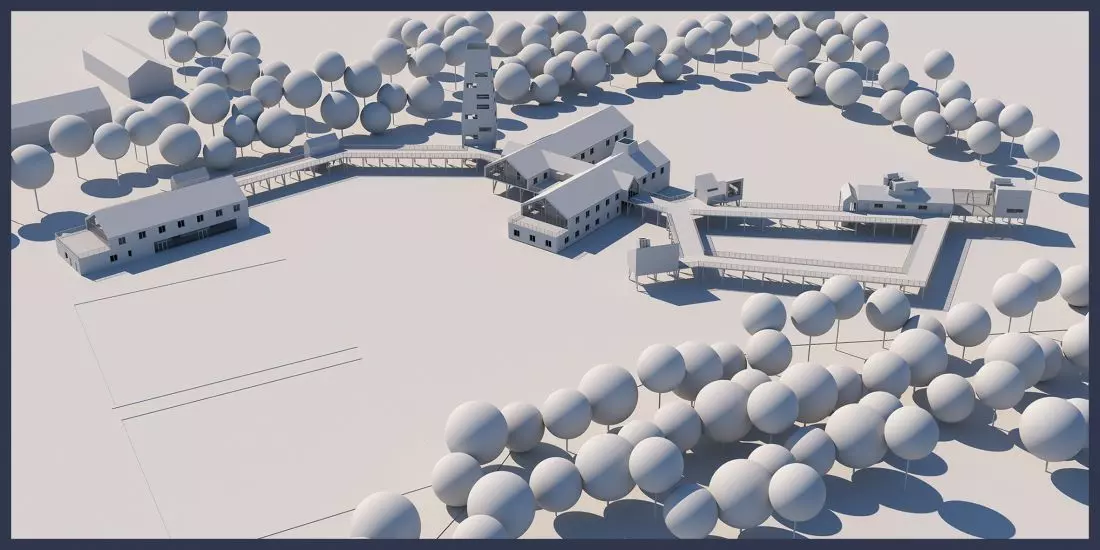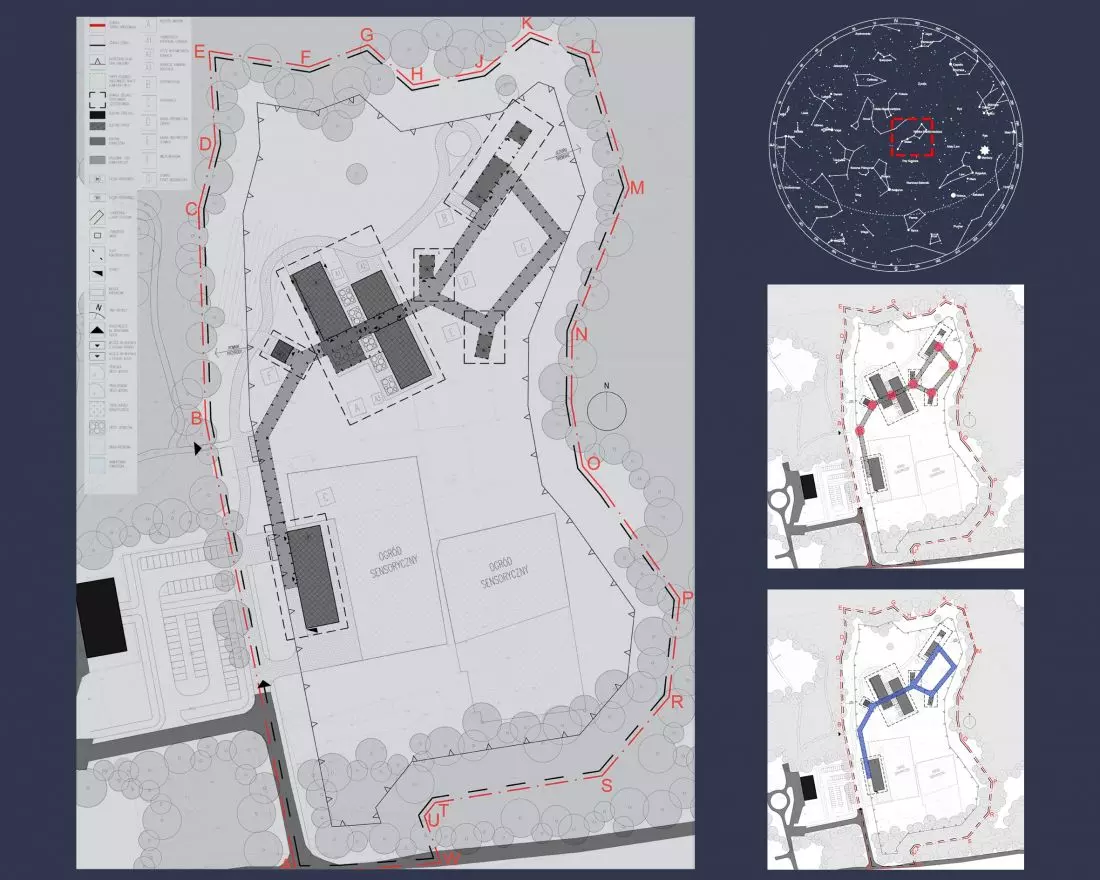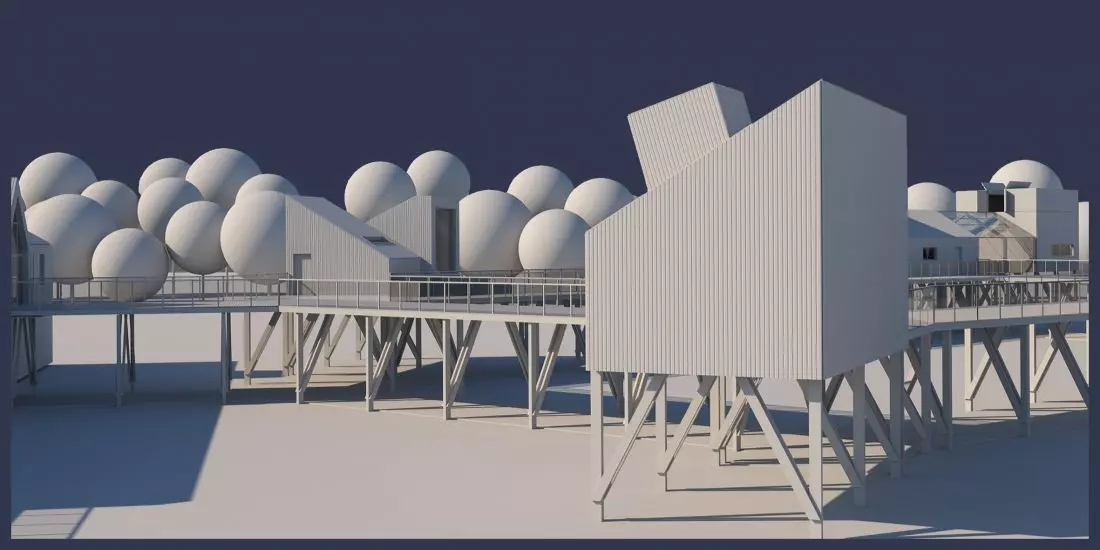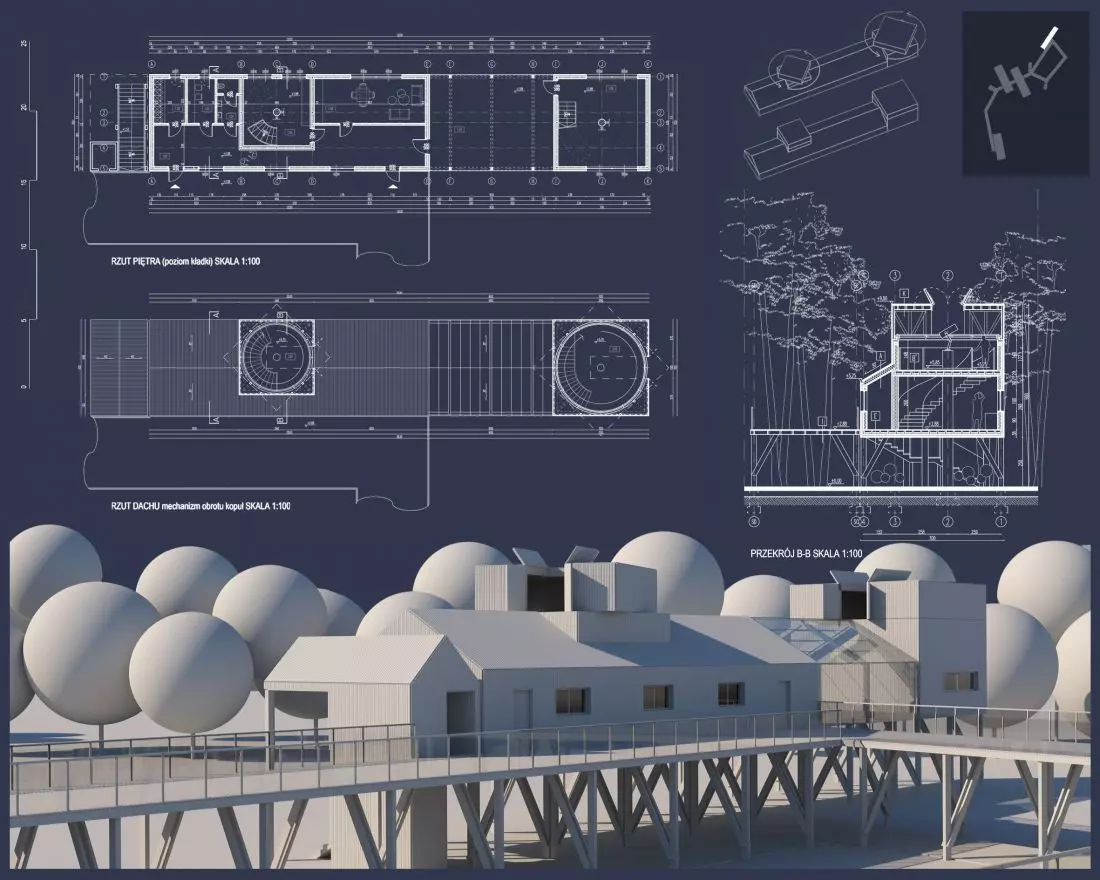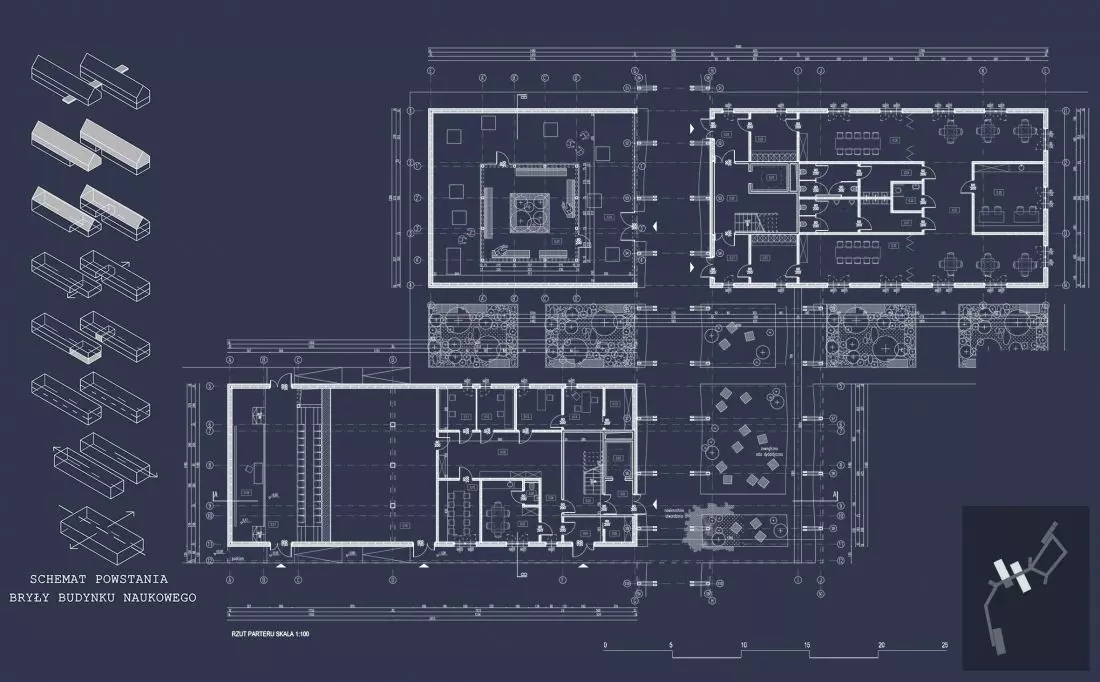The project of Mateusz Paszkiewicz, a graduate of Lodz University of Technology, touches on the problem of the modern world - pollution of the environment and sky by artificial light. In order to raise awareness of the importance of this phenomenon, the author proposed an astronomical observatory and a recreational and educational space in the Dark Sky Refuge - one of the five places in Poland under active sky protection.
The subject of Mateusz Paszkiwicz's thesis, carried out under the supervision of Dr. Blazej Ciarkowski at the Faculty of Construction, Architecture and Environmental Engineering of the Technical University of Lodz, is the design of an astronomical observatory in the Ostoja Ciemnego Nieba in Chalin.
The designed observatory is located in the Ostoja Ciemnego Nieba in Chalin
© Mateusz Paszkiewicz
It is one of five locations in Poland under active sky protection. This fact makes the site unique in the whole country. Light pollution is one of the most serious and widespread forms of environmental pollution. It adversely affects both humans and animals and even plants - among other things, by disrupting the natural cycle of darkness and light. At the same time, the problem of light pollution seems to be relatively rarely addressed in public debates, and the measures we take to counteract it are insufficient, says Matthew Paszkiewicz.
The layout of the buildings and the course of the didactic path refer to the Great Cart
© Mateusz Paszkiewicz
education and astrotourism
The aim of the young architect's project is to develop the existing Dark Sky Ostoja Dark Sky area and create a recreational and educational space on it, which will complement and enrich the didactic offer proposed by the Nature Education Center building adjacent to the plot.
sky observation booths
© Mateusz Paszkiewicz
The newly designed space also aims to create a place that encourages both the acquisition of knowledge of ecology and nature issues and the promotion of astrotourism. In addition, due to the conservation conditions covering the developed area, the author's primary goal was to preserve the transparency of a sky full of stars, to bring the problem of light pollution closer, and to present the possibility of creating spaces that remain in harmony with the surrounding nature.
Observatory and above-ground nature trail
After a thorough analysis of the collected materials, Mateusz Paszkiewicz prepared a conceptual design on an architectural and construction scale of the observatory. The building is part of a complex of buildings located along the route of the newly designed didactic path in the form of an above-ground tract.
didactic path and observatory
© Mateusz Paszkiewicz
Mateusz's proposed architecture fits into the natural context, does not disturb the existing ecosystem and can be an example of both environmentally and user-friendly solutions. The course of the above-ground nature trail, as well as the connections of objects, reflect one of the most recognizable star systems - the Great Cart.
A large role in the perception of architecture is played by light, shadow and twilight. Darkness gives space and allows freedom of interpretation. Depending on the sensitivity of the user, it can be interpreted differently. It is a phenomenon through which a person quiets the sense of sight, allowing to activate the others: smell, touch and hearing. The open area of the developed site gave me the opportunity to use all these assets. The opportunity to interact with light and darkness is provided by the buildings of the observatory, the observation tower and the forms of view openings in the various facilities," says the author.
first floor plan of the science building
© Mateusz Paszkiewicz
architecture interpenetrating with nature
Architecture in the Ostoja intermingles with nature, and visitors' attention is directed to the flora and fauna, as well as reactions to changing light conditions. In the facility, the architect designed "day" and "night" gardens, as well as sensory gardens.
The project uses wooden facades and structures and sloping roofs
© Mateusz Paszkiewicz
As the author mentions, the basis for the project was the desire to fit it into the existing space in a way that would make it an element of the surroundings, not interfering with its perception. Therefore, he assumed the creation of a development that, despite its contemporary appearance, is open to traditional structural and formal solutions. The buildings have features of organic architecture. Sloping roofs, wooden construction and glass are characteristics that fit the project into its surroundings.
B-B section and south elevation of the science building
© Mateusz Paszkiewicz
Thanks to these materials, the new architecture maintains consistency despite its diversity. Each designed building, despite the fact that it was created according to the same rules - a simple and clear plan, a cuboidal body, a sloping roof and a homogeneous elevation material - has its own individual character and unique form, Mateusz Paszkiewicz concludes.





























